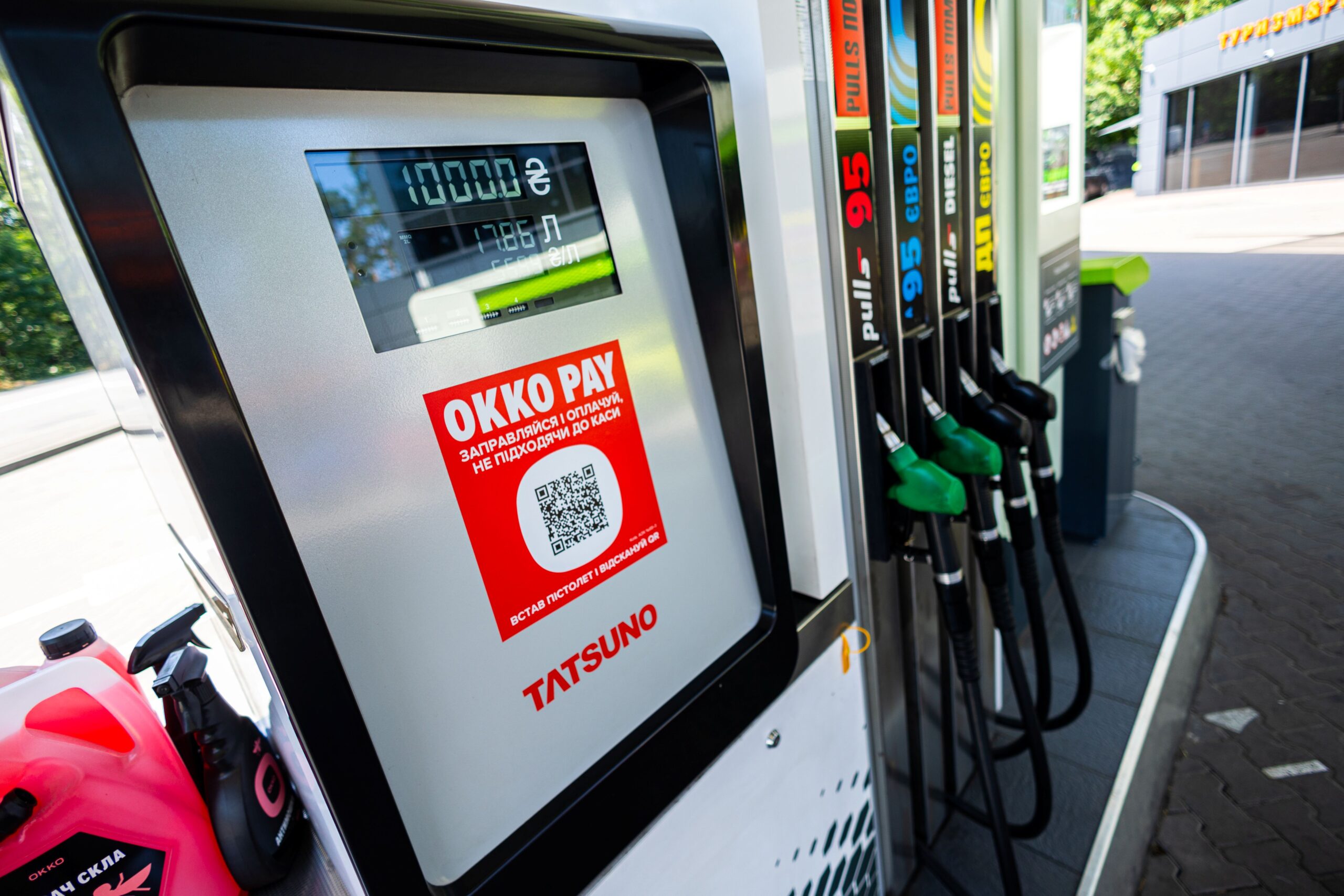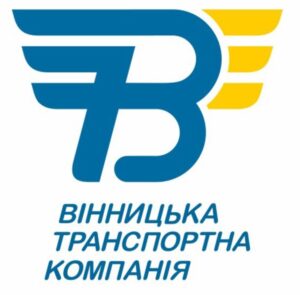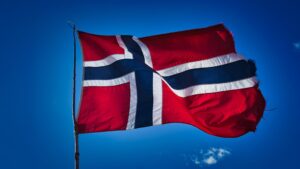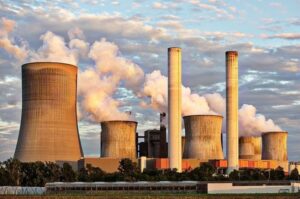
– The digital twin provides enhanced insight and control over the electrical systems and energy needs of an AI factory.
– The product collaboration integrates ETAP’s advanced digital twin technology with NVIDIA Omniverse™ Cloud APIs.
– Operators can benefit from improved energy efficiency, predictive maintenance, and lower total cost of ownership.
Boston (USA), March 18, 2025 – Schneider Electric, a leader in digital transformation for energy management and automation, and ETAP, an industry and technology leader in the design and operation of energy systems, are introducing an innovative digital twin that can accurately design and model the energy needs of artificial intelligence factories (or AI factories). Using the NVIDIA Omniverse™ Blueprint for AI Factory Digital Twins, Schneider Electric and ETAP are enabling the development of digital twins that combine multiple inputs for mechanical, thermal, network, and electrical systems to simulate how an AI factory operates. This collaboration aims to transform the design and operation of AI factories by providing improved understanding and control over electrical systems and energy needs, opening up opportunities for significant advances in efficiency, reliability, and sustainability.
Previously, basic visualization of electrical systems was possible, but the integration of ETAP and NVIDIA Omniverse technologies enables a comprehensive digital twin of an AI factory where multiple speakers interact seamlessly. ETAP’s sophisticated modeling technology creates a virtual replica of the data center’s electrical infrastructure and combines it with real-time power system data, advanced analytics, and insights. Intelligent algorithms analyze and predict energy consumption and distribution patterns, providing unprecedented insights:
– Advanced design and modeling of electrical systems
– Dynamic analysis of “what if” scenarios
– Real-time monitoring of electrical infrastructure performance
– Optimization of energy efficiency
– Predictive maintenance and system reliability assessment
– Infrastructure needs based on energy usage, which can help reduce total cost of ownership
Regardless of where it is deployed, whether in specialized high-end AI clusters or edge solutions, AI is driving a rapid increase in data center capacity. Unlike traditional computing tasks, AI tasks require a significant increase in electrical power, both for a single server rack (100 kW or more) and for the data center as a whole.
As the adoption of AI accelerates, startups, enterprises, colocation providers, and Internet giants must rethink data center design and management to address the growing need for energy efficiency.
ETAP and NVIDIA’s collaboration introduces an innovative network-to-chip approach that addresses the critical challenges of energy management, performance optimization, and energy efficiency in the AI era. Currently, data center operators have access to rack-level estimates of average energy consumption, but the new digital twin of ETAP aims to increase the accuracy of modeling dynamic load behavior at the chip level to improve power system design and optimize energy efficiency.
This joint effort underscores both ETAP and NVIDIA’s commitment to driving innovation in the data center sector, enabling businesses to optimize their operations and effectively manage the challenges of AI workloads. The collaboration aims to increase data center efficiency, as well as improve network reliability and performance.
“As AI workloads grow in complexity and scale, precise energy management is critical to ensure efficiency, reliability, and sustainability,” said Dion Harris, senior director of HPC and AI Factory solutions at NVIDIA. “Through our collaboration with ETAP and Schneider Electric, we are giving data center operators unprecedented visibility and control over energy dynamics, enabling them to optimize their infrastructure, accelerate AI adoption, and improve operational resiliency.”
“This collaboration represents more than just a technology solution,” said Tanuj Khandelwal, CEO of ETAP. “We are fundamentally rethinking how data centers can be designed, managed, and optimized in the AI era. By combining electrical engineering with advanced virtualization and AI technologies, we are creating a new paradigm for infrastructure management.”
Pankaj Sharma, Executive Vice President, Data Center, Networking and Services, Schneider Electric, added: “Collaboration, speed, and innovation are the driving forces behind the transformation of digital infrastructure required to handle AI workloads. Together, ETAP, Schneider Electric, and NVIDIA are not only advancing data center technology, we are enabling businesses to optimize their operations and seamlessly manage AI energy needs.”
About ETAP
ETAP provides market-leading software solutions for electrical systems, from design and engineering to operations and maintenance.
Through its integrated digital twin electric system platform, ETAP delivers best-in-class, continuous customer experience and cloud-enabled technologies, providing universal access for designers, engineers, and operators, accelerating their digital transformation of the power industry even in the most regulated environments.
More than 20,000 enterprises worldwide rely on ETAP to achieve full efficiency and sustainability across all life cycle stages for utilities, infrastructure, industry, and buildings. For more than 38 years, driving excellence, innovation and customer satisfaction, ETAP’s deep expertise is supported by the dedication of more than 1,000 employees and a strong community of active users.
ETAP is headquartered in Irvine, California, with regional operations around the world to support local customers.
About Schneider Electric
Schneider’s purpose is to create impact by empowering everyone to make the most of our energy and resources, ensuring progress and sustainability for all. We call it Life Is On.
Our mission is to be a trusted partner in sustainability and efficiency.
We are a global technology leader, bringing world-class expertise in electrification, automation and digitalization to smart industries, reliable infrastructure, future-proof data centers, smart buildings and intuitive homes. Drawing on our deep industry expertise, we provide integrated end-to-end AI-enabled industrial IoT solutions with connected products, automation, software and services, creating digital twins to drive profitable growth for our customers.
Ourmain resource is our 150,000 employees and more than a million partners operating in more than 100 countries to ensure proximity to our customers and stakeholders. We support diversity and inclusion in everything we do, guided by our meaningful purpose of a sustainable future for all.

– The brand new premium portable power station is designed for outdoor adventurers and those who need reliable backup power at home.
– The Schneider OffGrid provides backup power for mobile devices and small appliances in a compact and lightweight package.
– Sustainable approach – Schneider OffGrid is designed with sustainability in mind: 60% of the plastic in its construction is recycled and the packaging is 100% recyclable.
Paris, Rueil-Malmaison, France, March 24, 2025 – Schneider Electric, a leader in digital transformation in energy management and automation, is presenting its innovative power protection solution to European consumers – Schneider OffGrid. This is a new portable power plant with a long battery life and versatile connection options, designed to reduce environmental impact. As a leader in backup power, Schneider Electric is strengthening its innovation in personal power by building on its brand heritage and commitment to quality in the consumer segment.
Designed for a connected world, Schneider OffGrid delivers reliable power in a compact and lightweight design, providing electricity in an age where it has become a vital necessity – for everyday life and outdoor adventures alike. In today’s mobile world, people want to enjoy the outdoors while staying connected – whether they’re camping or traveling across Europe.
With the new generation valuing experiences that require energy – for music, cooking and charging devices – continuous access to electricity is becoming a necessity. Schneider OffGrid offers solutions to support a variety of lifestyles, from digital creators and DIYers to professionals working remotely, providing power for creative tools such as cameras and drones, as well as for social media and blogging to share new experiences in real time.
With a long-life battery, this premium portable power station keeps phones, laptops, cameras and small appliances running – whether you’re off-grid or in a situation where you need backup power. The Schneider OffGrid is equipped with a wide range of charging ports, including a car socket, USB-A, USB-C, AC outlets, DC ports, and even wireless charging, allowing you to power virtually any mobile device or small appliance.
“Whether you’re hiking, camping, or need power in an emergency, Schneider OffGrid will provide power for your devices no matter where you are, ensuring that your daily life and adventures remain uninterrupted,” said David Mann, director of category management, Secure Power Europe at Schneider Electric.
The ability to charge the portable power station using compatible solar panels makes it an ideal source of energy for use in both outdoor and everyday life. Its compact yet powerful battery keeps appliances running, and its quiet and environmentally friendly operation makes Schneider OffGrid a better alternative to a traditional generator.
Schneider OffGrid is based on reliability, environmental friendliness and adaptability:
– Reliable, long-lasting power: As one of the lightest models on the market, the OffGrid portable power plant delivers more power and lasts significantly longer than other alternatives, offering high capacity in a compact and robust package. The Schneider OffGrid also features LED lighting and a flashing SOS mode for increased visibility and emergency preparedness.
– Environmentally friendly by design: The Schneider OffGrid reduces waste and environmental impact with a 60% recycled plastic construction and 100% recyclable cardboard and paperboard packaging. The energy-efficient design conserves energy and extends battery life with an automatic shutdown function in Eco Mode.
– Adaptive charging on the go: The Schneider OffGrid supports flexible charging options including solar panels, USB-C, car and wall outlets, making it versatile and convenient. The device can be connected to a wide range of gadgets, ensuring compatibility and ease of use. The intuitive LCD display provides clear and accessible information, simplifying control and user experience.

The most sustainable company in the world
Recognized as the World’s Most Sustainable Company for the second time by Corporate Knights, Schneider Electric demonstrates its continued leadership in smart, sustainable and reliable energy solutions with the new Schneider OffGrid portable power plant, which offers an innovative way to stay connected to energy while reducing environmental impact.
About Schneider Electric
Schneider’s purpose is to create impact by empowering everyone to make the most of our energy and resources, ensuring progress and sustainability for all. We call it Life Is On.
Our mission is to be a trusted partner in sustainability and efficiency.
We are a global technology leader, bringing world-class expertise in electrification, automation and digitalization to smart industries, reliable infrastructure, future-proof data centers, smart buildings and intuitive homes. Drawing on our deep industry expertise, we provide integrated end-to-end AI-enabled industrial IoT solutions with connected products, automation, software and services, creating digital twins to drive profitable growth for our customers.
Ourmain resource is our 150,000 employees and more than a million partners operating in more than 100 countries to ensure proximity to our customers and stakeholders. We support diversity and inclusion in everything we do, guided by our meaningful purpose of a sustainable future for all.

Schneider Electric, a leader in digital transformation in the field of energy management and automation, and the OKKO filling station network have implemented a large-scale project for uninterrupted power supply and infrastructure reliability – 290 out of 410 filling stations of the network will be equipped with uninterruptible power supplies (UPS) with modern powerful batteries in 2022-2024, and in 2025 it is planned to equip another 50 filling stations of the network with the same UPS.
The equipment chosen by OKKO is designed to protect the power supply in the most unstable conditions. Schneider Electric lithium-ion UPS has a long service life without battery replacement (up to 12-15 years), long autonomy time with its compact dimensions and ease of maintenance.
“Even before the large-scale blackouts, OKKO started implementing a plan to modernize the corporate data network. We realized that we needed efficient equipment that would ensure the smooth operation of all vital filling station systems – cash registers, fuel dispensers, equipment providing Wi-Fi and other customer services. We started looking for the right powerful equipment, analyzing the world’s experience. The solution from Schneider Electric provided the result we needed. In fact, regardless of power outages at OKKO filling stations, customers will not face delays in payments or lack of Wi-Fi,” said Sergiy Lesko, CIO of OKKO.

“Schneider Electric has deep experience in technologies and practices that can improve energy efficiency and sustainability, understands and carefully studies the specific needs of each Ukrainian customer,” said Volodymyr Dokhlenko, Head of Secure Power at Schneider Electric in Ukraine, Czech Republic and Slovakia, ”As part of this project, our client received uninterrupted power supply to the filling station for up to 5 hours, as well as the preservation of critical data and round-the-clock monitoring of the UPS network.”
The UPS network monitoring system is provided by the equipment supplier. Thanks to predictive analytics of the UPS operation status and notifications about the need to replace it soon, service work is carried out in a timely manner, minimizing the risk of downtime.
About OKKO
The OKKO filling station network is one of the largest filling station networks in Ukraine (as of the beginning of 2025 – 410 filling stations). The company also has a network of on-the-go catering establishments, stationary and mobile laboratories for quality control of petroleum products, etc.
The company is one of the largest taxpayers in the fuel market. Based on the results of operations in 2024, the companies of OKKO Group paid a total of UAH 21.1 billion in taxes to the budget and state funds. This is UAH 5.6 billion, or 36%, more than in 2023.
About Schneider Electric
Schneider’s purpose is to create impact by empowering everyone to make the most of our energy and resources, ensuring progress and sustainability for all. We call it Life Is On.
Our mission is to be a trusted partner in sustainability and efficiency.
We are a global technology leader, bringing world-class expertise in electrification, automation and digitalization to smart industries, reliable infrastructure, future-proof data centers, smart buildings and intuitive homes. Drawing on our deep industry expertise, we provide integrated end-to-end AI-enabled industrial IoT solutions with connected products, automation, software and services, creating digital twins to drive profitable growth for our customers.
Ourmain resource is our 150,000 employees and more than a million partners operating in more than 100 countries to ensure proximity to our customers and stakeholders. We support diversity and inclusion in everything we do, guided by our meaningful purpose of a sustainable future for all.

KP “Vinnitsa transport company” on March 26 announced a tender for services on insurance of carrier’s liability for damage caused to the life and health of passengers and luggage during transportation by road transport (with more than 18 passengers) and on urban electric transport.
According to the message in the system of electronic public procurement Prozorro, the expected cost of the purchase of services is 2.960 million UAH.
The deadline for submission of proposals is April 3.
liability insurance, TENDER, Vinnytsia Transportation Company

Norway is providing an additional NOK1 billion ($95 million) to finance gas imports to Ukraine to ensure adequate supplies for households, businesses and industry in the country, the Norwegian government said on Wednesday.
“A more secure energy supply is essential for Ukraine’s resilience. This was one of the topics discussed during President Zelensky’s visit to Norway last week. There is an urgent need to increase funding for gas imports to provide electricity and heating for homes, businesses and public institutions. Norway is doing its part to meet this need,” said Prime Minister Jonas Gahr Støre.
The new financing will be channelled through the European Bank for Reconstruction and Development (EBRD) and will be used to purchase gas from Western sources. The recipient of the gas will be the Ukrainian state-owned company Naftogaz. The imported gas will be used to meet consumption needs and increase gas reserves in case of further attacks on gas infrastructure. The financing is provided under the Nansen Support Program for Ukraine, and NOK1 billion is taken from the 2025 energy sector allocation for Ukraine.
“Access to electricity is essential to ensure the security of the Ukrainian people and to ensure the continued functioning of society. The attacks on Ukraine’s energy supply are and have been an attack on the very core of Ukrainian society. They are part of an attempt to weaken the Ukrainian economy and undermine the confidence of the Ukrainian people in their government. That is why it is crucial and strategic to help preserve access to gas,” said Foreign Minister Espen Barth Eide, who is visiting Ukraine this week.
The additional allocation will bring Norway’s total contribution to Ukraine’s gas purchases from 2022 to NOK3.6 billion ($342 million). In 2023, NOK635 million was allocated for gas purchases. The funds have already been released and can be used to increase the total contribution. Thus, the total amount of the agreement is NOK1.635 billion ($155 million).
“We don’t know yet how much gas Ukraine will need to import this year, but Norway’s contribution will enable Ukraine to better cope with the consequences of new attacks from Russia and make the necessary preparations for next winter,” Eide said.
The EBRD has been cooperating with Naftogaz for several years, in particular on corporate governance. Channelling funds through the EBRD helps to reduce risks, such as the risk of corruption and financial irregularities, the statement said.
As reported, Ukrainian Prime Minister Denys Shmyhal on Wednesday discussed joint humanitarian programs and sanctions against Russia with Norwegian Foreign Minister Espen Barth Eide and Norwegian Minister of Labor and Social Inclusion Tonje Brenna. The prime minister also thanked Norway for its assistance in the energy sector, in particular for its readiness to make a EUR140 million contribution through the EBRD for the purchase of gas for Ukrainian gas storage facilities.

Industrial production in Ukraine increased by 3.6% in 2024, while in 2023, according to revised data, the growth was 6.8% after a 36.7% drop in 2022, the State Statistics Service (Ukrstat) reported on Wednesday.
At the same time, according to the State Statistics Service, industrial production in Ukraine decreased by 3.3% in December 2024 compared to December 2023, and by 0.4% in November.
The State Statistics Service reminds that last year, from January to May, industrial production grew: after a jump of 17.2% in January, the recovery slowed to 3.6% in May, in the summer, a decline was recorded from 0.3% in June to 1.5% in July and 4.3% in August, after which it was followed by a slight increase of 1.3% and 0.9% in September and October, respectively.
According to the statistics agency, in 2024, industrial production in mining and quarrying increased by 3.3%, in manufacturing by 5.3%, while the supply of electricity, gas and steam decreased by 2.7% due to a 6.3% drop in electricity production, although gas production increased by 5%.
It is noted that the production of metal ores grew the most – by 23.0%, other minerals and quarrying – by 16.3%, while oil and gas – by only 0.7%, and coal – decreased by 11.7%.
In manufacturing, the largest growth was recorded in metallurgy and production of metal products – 22.5%, clothing production – 19.6%, and furniture – 7.3%. The production of food, beverages and tobacco products increased by 6.2%, textiles by 4.7%, rubber and plastics by 3.4%, pharmaceuticals by 1.9%, and paper and paper products by 1.4%.
At the same time, machine building in 2024 fell by 1.2%, woodworking by 8.8%, chemical production by 9.9%, automotive by 17%, and production of computers, electronic and optical products by 19%.
In nominal terms, in 2024, Ukraine sold industrial products (goods and services) worth UAH 3.657 trillion, which is 11.8% more than in 2023, including UAH 680.3 billion worth of exports (an increase of 24.4%).
In total sales of industrial products in 2024, the manufacturing industry accounted for the largest share (59.9% vs. 56% in 2023), supply of electricity, gas, steam and air conditioning (27.2% vs. 31.2% in 2023), mining and quarrying (remained at 11.7%), and water supply, sewerage and waste accounted for another 1.2% (1.1%).